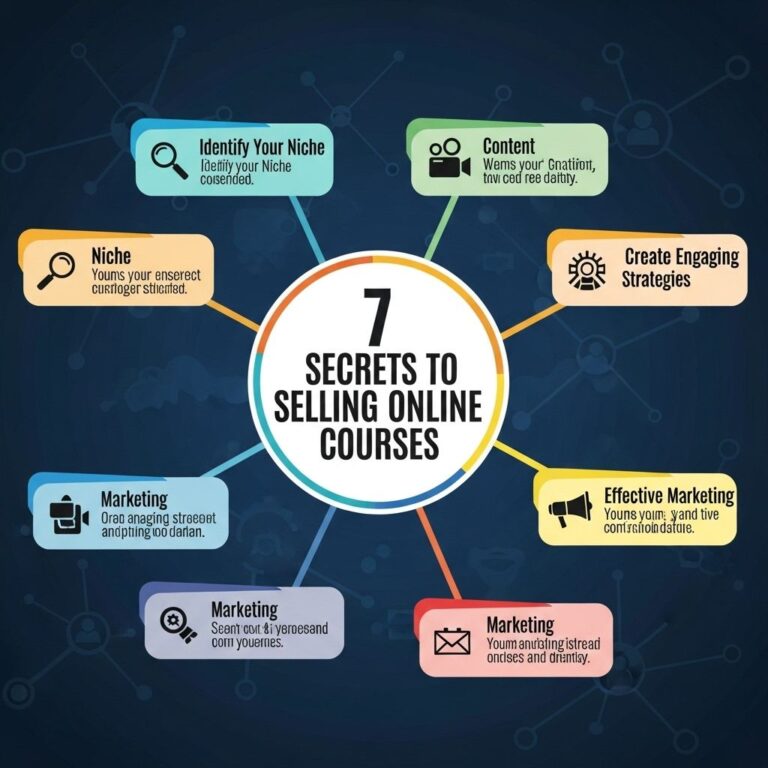In today’s digital world, the demand for online courses has skyrocketed. Entrepreneurs and educators alike recognize the potential to share their knowledge while generating substantial income. However, creating a course that truly resonates with learners and sells effectively requires strategic planning and execution. This article delves into the essential steps to create lucrative courses that captivate your audience and drive sales.
Table of Contents
Understanding Your Audience
Before you even think about course content, it’s crucial to understand who your target audience is. Each demographic has unique needs and preferences, and knowing these can dramatically influence your course’s success.
Identify Your Niche
- Research Market Demand: Utilize tools like Google Trends or keyword research tools to gauge interest in specific subjects.
- Analyze Competitors: Look at what successful courses are already available and identify gaps.
- Define Your Audience: Create a detailed profile of your ideal learner—age, profession, interests, and pain points.
Crafting Compelling Content
Once you have a clear understanding of your audience, it’s time to focus on the content of your course. This is the heart of your offering and should be structured to engage learners from start to finish.
Structuring Your Course
- Start with an Outline: Create a comprehensive outline that breaks down modules or sections of your course.
- Engaging Introductions: Each module should begin with a hook—an interesting fact, a question, or a relevant anecdote.
- Clear Learning Objectives: State what students will be able to do by the end of each section.
Creating Diverse Learning Materials
To cater to different learning styles, it’s essential to include a variety of materials:
| Material Type | Description |
|---|---|
| Videos | Engaging video content that breaks down complex topics. |
| Infographics | Visual representations of information to aid understanding. |
| Quizzes | Interactive quizzes to reinforce learning and track progress. |
| Downloadable Resources | PDFs, worksheets, or eBooks for offline study. |
Effective Marketing Strategies
Creating great content is just one part of the equation. You need to have a solid marketing strategy in place to ensure your course reaches potential buyers.
Building an Online Presence
Establishing a strong online presence is key to attracting students:
- Website and Blog: Create a professional website and consider starting a blog to share valuable insights related to your course topic.
- Social Media: Utilize platforms like Facebook, Instagram, and LinkedIn to promote your course and engage with potential students.
- Email Marketing: Build an email list of interested parties and send regular updates and valuable content to nurture leads.
Creating Buzz Around Your Course
Generating excitement can significantly impact your course sales:
- Pre-launch Campaigns: Create a buzz with sneak peeks, webinars, or free mini-courses.
- Testimonials and Reviews: Use positive feedback from early students to build credibility.
- Limited-Time Offers: Consider launching your course with a special introductory price.
Optimizing Sales Funnels
To maximize course sales, an effective sales funnel is essential. This process helps guide potential customers from initial awareness to the purchase decision.
Components of an Effective Sales Funnel
The sales funnel typically includes the following stages:
- Awareness: Attract potential students through ads, content marketing, or social media.
- Interest: Capture interest with valuable content that showcases your expertise.
- Decision: Provide sufficient information and incentives (like discounts) to encourage purchase.
- Action: Ensure a seamless checkout process to minimize cart abandonment.
Implementing Continuous Improvement
Creating a course is not a one-time effort. Continuous improvement based on feedback and industry trends is crucial for long-term success:
Gathering Feedback
After launching your course, actively seek feedback from students:
- Surveys: Use anonymous surveys to learn what students liked and what could be improved.
- Engagement Metrics: Analyze data on completion rates and quiz scores to identify problem areas.
Updating Content
The digital landscape is constantly changing. Regularly update your course materials to ensure they remain relevant and valuable:
- Incorporate New Trends: Stay informed about developments in your field and update accordingly.
- Add New Resources: Enhance your course with new materials or bonus content to maintain interest.
Conclusion
Creating a course that sells involves a blend of understanding your audience, crafting compelling content, implementing effective marketing strategies, optimizing your sales funnel, and committing to continuous improvement. By following these strategies, you can create an online course that not only educates but also thrives in a competitive market. Start today, and turn your knowledge into a flourishing online course business!
FAQ
What are the key elements of a successful online course?
A successful online course should have clear learning objectives, engaging content, interactive elements, and a strong marketing strategy to attract students.
How can I effectively market my online course?
Utilize social media, email marketing, SEO strategies, and partnerships with influencers to reach your target audience and promote your course.
What platforms are best for hosting and selling online courses?
Popular platforms for hosting and selling online courses include Teachable, Thinkific, and Udemy, each offering unique features and pricing structures.
How can I price my online course competitively?
Research similar courses in your niche, consider your target audience’s budget, and evaluate the value you provide to determine a competitive price point.
What type of content should I include in my online course?
Include a mix of video lectures, PDFs, quizzes, and interactive elements to cater to different learning styles and keep students engaged.
How can I gather feedback to improve my online course?
Encourage student feedback through surveys, reviews, and direct communication to identify areas for improvement and enhance the overall learning experience.









